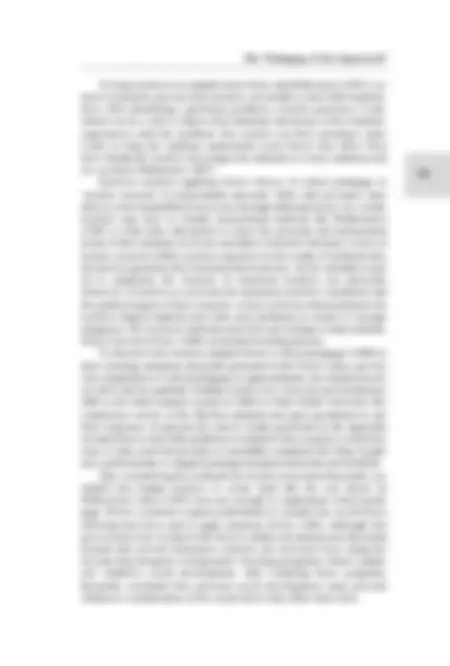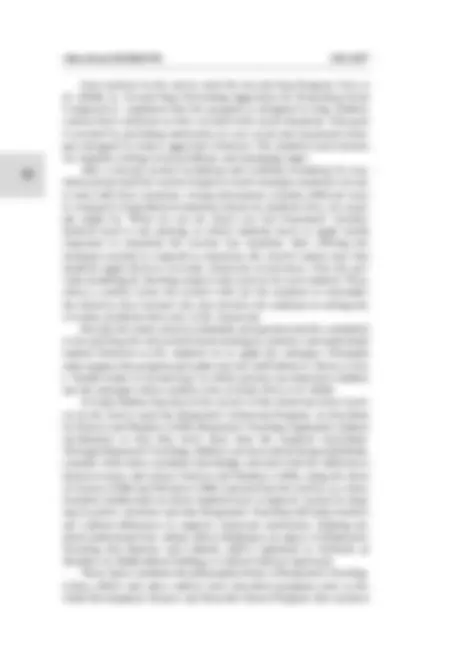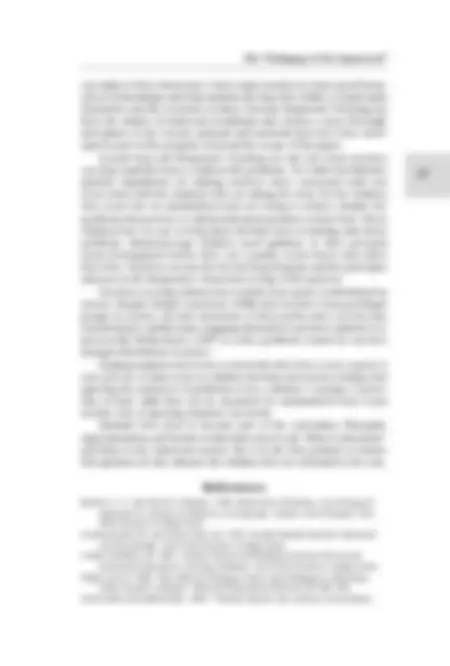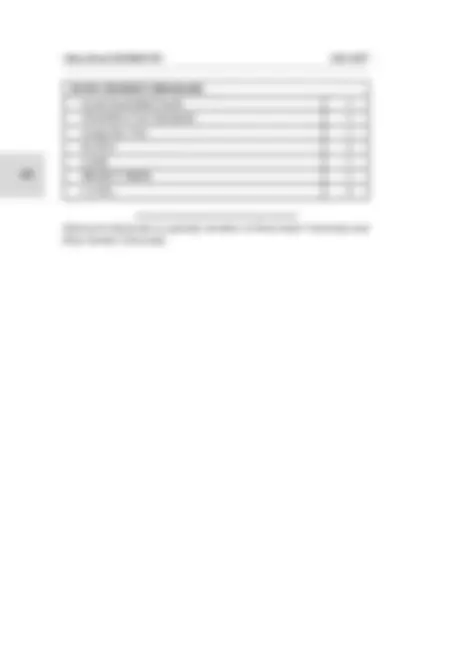






Study with the several resources on Docsity

Earn points by helping other students or get them with a premium plan


Prepare for your exams
Study with the several resources on Docsity

Earn points to download
Earn points by helping other students or get them with a premium plan
Community
Ask the community for help and clear up your study doubts
Discover the best universities in your country according to Docsity users
Free resources
Download our free guides on studying techniques, anxiety management strategies, and thesis advice from Docsity tutors
The challenges teachers face in addressing students' problems amidst standardized testing pressures and the importance of critical pedagogy in helping students understand social forces that affect their lives. The article discusses Paulo Freire's method and how teachers can adapt it to their classrooms, as well as programs like Second Step and Responsive Teaching.
Typology: Study notes
1 / 8

This page cannot be seen from the preview
Don't miss anything!





tudents have problems in their lives, but can teachers help them? Should teachers help? The No Child Left Behind act and its empha- sis on standardized test results have forced school systems to pro- duce high scores, and in turn school administrators pressure teachers to prepare students for taking standardized tests. Teachers may want to deal with students’ problems, but a required curriculum emphasizing skill drills has compromised teaching time. Teachers are not free to determine what should be taught in their classrooms. NCLB also tends to exclude certain topics from the classroom, where social forces already discourage teachers from encouraging criti- cal thinking about the distribution of power in society. Michelle Fine’s ethnographic study (2002) of a low-income urban school found that most of the teachers discouraged students from considering the social problems that affect their lives. The teachers, she concluded, feared that discussing the distribution of power in our society would threaten their position in the classroom. As a result, the students became more alienat- ed from the school and the classroom because their lives were not a part of the curriculum. Yet this alienation can and should be addressed in the classroom. Giroux (1988) challenged teachers to become “transformative intellectu- als” devoted to changing students’ lives and society. Bowers and Flanders (1990) saw Giroux’s mandate as an opportunity for teachers to help stu- dents understand how ideas can actually help change the societal power structure. Reinforcing Giroux, McLaren (1989) challenged teachers to help students understand the social forces that affect their lives. Although many teachers are not comfortable with discussing stu- dents’ lives in the classroom, others want to help their students solve life problems. These teachers try to modify rigid or scripted curricula to
meet the needs of their students. A teacher can consider a question that arises in her teaching situation, read research that examines the ques- tion, and then modify the ideas in the research to create new methods of teaching the curriculum—which in turn can be shared with other teachers (Cochran-Smith and Lytle 1993). The work of Paulo Freire described a method that teachers can mod- ify to help their students. Freire’s Pedagogy of the Oppressed (1990) challenged educators to include the lives of their students in developing literacy. Freire used objects common in the slums of Brazil to improve residents’ literacy while they considered how to improve their econom- ic lives (Muello 1997). In thirteen weeks working in the public school system of New York City, he used the language and lives of high school students to raise their reading levels from functional illiteracy to sixth- or seventh-grade levels (Muello 1997).
educational HORIZONS Fall 2007
Four teachers in the survey used the Second Step Program. Frey et al. (2000), in “Second Step: Preventing Aggression by Promoting Social Competence,” explained that the program is designed to help children control their emotions so they can deal with social situations. That goal is reached by providing instruction in core social and emotional strate- gies designed to reduce aggressive behavior. The students learn lessons on empathy, solving social problems, and managing anger. After a one-day teacher workshop and a half-day workshop for non- instructional staff, the teacher begins to teach strategies students can use to deal with their emotions. Group discussions consider different ways to respond to hypothetical situations based on students’ lives. An exam- ple might be “What do you do when you feel frustrated?” Another method used is role playing, in which students learn to apply useful responses to situations the teacher has modeled. After offering the strategies needed to respond to situations, the teacher makes sure that students apply them to everyday classroom occurrences. First she pro- vides modeling by showing respect and concern for each student. Then, when a conflict arises, the teacher will cue the students to remember the behavior they learned. She also involves the students in solving the everyday problems that arise in the classroom. Because the entire school community and parents must be committed to Second Step, the school staff needs training to reinforce and understand student behaviors as the students try to apply the strategies. Principals must support the program and make sure the staff follows it. There is even a “Family Guide to Second Step” in which parents can help their children use the strategies when conflicts arise at home (Frey et al. 2000). To help children function in the society of the classroom, three teach- ers in the survey used the Responsive Classroom Program. As described by Bowers and Flanders (1990), Responsive Teaching emphasizes student socialization so that they learn more than the required curriculum. Through Responsive Teaching, children can learn about being individuals, consider what ideas constitute knowledge, and deal with the differences between home and school. Bowers and Flanders (1990), citing the ideas of Giroux (1988) and McLaren (1989), asserted that the teacher as a trans- formative intellectual can show students how to improve society by shap- ing its power structure and that Responsive Teaching will help teachers use cultural differences to improve classroom instruction. Helping stu- dents understand how culture affects thinking is an aspect of Responsive Teaching that Ramirez and Callardo (2001) explained in Portraits of Teachers in Multicultural Settings: A Critical Literacy Approach. These ideas constitute the philosophical base of Responsive Teaching. Cohen (2001) and other authors have described programs such as the Child Development Project and Peaceful School Program that teachers
educational HORIZONS Fall 2007
can adapt to their classrooms. Cohen urges teachers to foster good home- school relationships and help students develop their ability to understand themselves and the reactions of others. Because Responsive Teaching has been the subject of numerous workshops and courses, a more thorough description of the various methods and materials that have been devel- oped as part of the program is beyond the scope of this paper. Second Step and Responsive Teaching are just two ways teachers can help students learn to address life problems. No Child Left Behind’s punitive stipulations are making teachers more concerned with test scores than with the students who are taking the tests. Yet the children who score low on standardized tests are trying to achieve despite the problems that poverty or cultural alienation produce in their lives. These children have no one to help them develop ways of dealing with these problems. Elementary-age children need guidance in their personal social development before they can consider social forces that affect their lives. Teachers can use the Second Step Program and the principles inherent in the Responsive Classroom to help in this process. Teachers can help adolescents consider how power is distributed in society. Despite Delpit’s assertion (1988) that teachers from privileged groups in society can lack awareness of their power, they can become transformative intellectuals, engaging themselves and their students in a process like Wallerstein’s (1987) to solve problems caused by society’s unequal distribution of power. Helping students learn how to deal with their lives is not a quick or easy process. It takes years as children develop and society changes, but ignoring the existence of problems is not a solution. Creating a curricu- lum of basic skills that can be measured by standardized tests is just another way of ignoring students’ real needs. Students’ lives need to become part of the curriculum. Principals, superintendents, and boards of education need to ask, “What is education?” and listen to the classroom teacher. She is in the best position to answer that question, for she educates the children who are entrusted to her care.
Bowers, C. A., and David J. Flanders. 1990. Responsive Teaching—An Ecological Approach to Classroom Patterns of Language, Culture, and Thought. New York: Teacher’s College Press. Cochran-Smith, M., and Susan Lytle, eds. 1993. Inside/Outside: Teachers’ Research and Knowledge. New York: Teacher’s College Press. Cohen, Jonathan, ed. 2001. Caring Classroom/Intelligent Schools: The Social Emotional Education of Young Children. New York: Teacher’s College Press. Delpit, Lisa D. 1988. “The Silenced Dialogue: Power and Pedagogy in Educating Other People’s Children.” Harvard Educational Review 38: 280–298. Fecho, Bob, and JoBeth Allen. 2003. “Teacher Inquiry into Literacy, Social Justice,
The “Pedagogy of the Oppressed”
The “Pedagogy of the Oppressed”
Patricia R. Reynolds is a faculty member at Penn State University and Holy Family University.
educational HORIZONS Fall 2007
Good Touch/Bad Touch 1 Chick-Fil-A Core Essentials 1 Camp Fire USA 1 D.A.R.E. 3 CADE 1 PROJECT PRIDE 1 C.O.P.S. 2